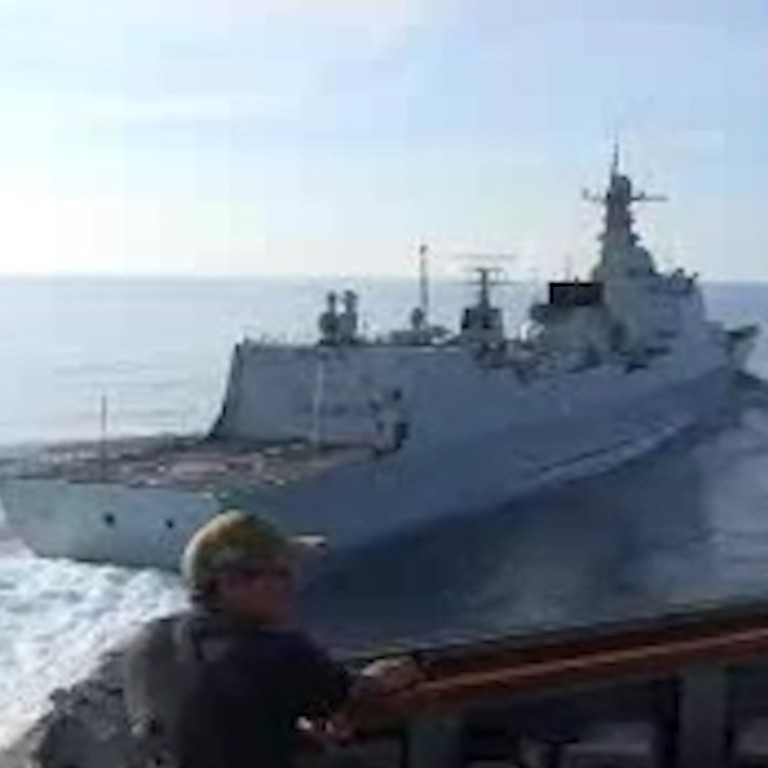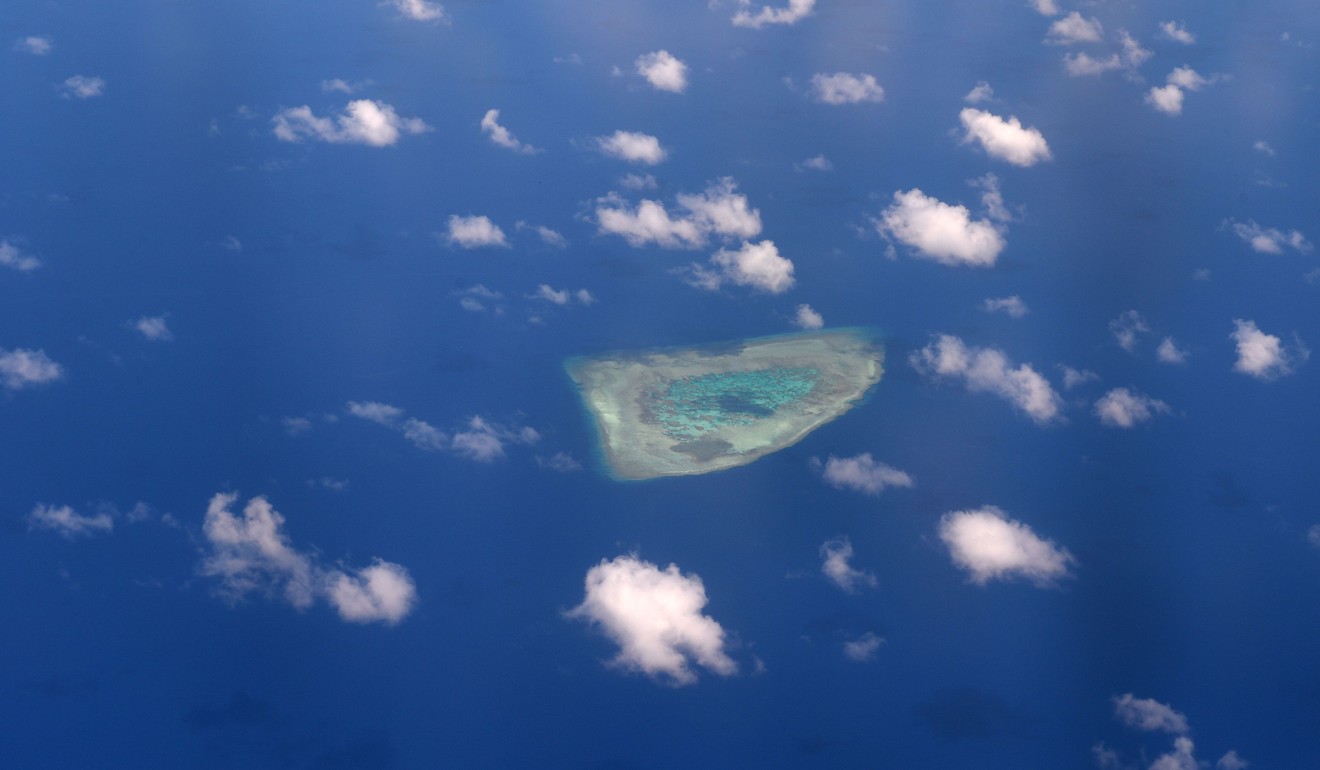
Exclusive | Exclusive: US Navy footage of warships’ near collision in South China Sea
- New footage of a 2018 encounter between a Chinese and US warship has been released to the Post following a freedom of information request
- Experts say it appears to show the Chinese PLA crew preparing for a collision
Keith Patton, deputy chairman of the Strategic and Operational Research Department at the US Naval War College, said the video suggested the Chinese crew believed a crash was imminent.
“It could be upping the game of chicken with the PLAN warship signalling it was serious by making those preparations,” Patton said.
Hu Bo, director of the Centre for Maritime Strategy Studies at Peking University, described the preparation of the buoys as a “natural response” ahead of a likely accident.
Has the US already lost the battle for the South China Sea?
The latest video was released to the South China Morning Post last week, following a freedom of information request sent last year to the US Department of the Navy.
US officials at the time accused the Chinese vessel of carrying out an “unsafe and unprofessional manoeuvre” by sailing within 45 yards of the US warship during a “freedom of navigation” patrol (FONOP) near the disputed Spratly Islands.

Beijing, which claims historic rights to about 90 per cent of the waterway, accused the US side of “provocative actions” and violating “basic norms governing international relations” over the incident.
The South China Sea, which holds massive untapped oil and gas reserves and carries about one-third of global shipping, has emerged in recent years as a major flashpoint in the escalating competition between Washington and Beijing.
Beijing has constructed numerous island outposts around reefs and islets in the waters that are also claimed by the Philippines, Vietnam, Malaysia, Brunei and Taiwan, allowing it to deploy missile batteries, radar systems and aircraft hundreds of miles from shore. In 2016, an international arbitration tribunal found the “nine-dash line” by which Beijing claims most of the waterway to have no basis in international law.
Exclusive details and footage emerge of near collision in South China Sea
Washington, which has no claims of its own but accuses Beijing of militarising international waters, conducts FONOPs near the disputed features that it says are intended to challenge China’s excessive territorial claims and keep the waters open for international shipping. Beijing has cast Washington’s patrols as a threat to its sovereignty and regional peace and security.
James Homles, a professor of maritime strategy at the US Naval War College, said publicising displays of the US stance on the waterway had some strategic advantages for Washington.
“There are sort of two ways to approach such demonstrations, publicly and privately,” Homles said. “Publicly meaning you publicise it in the press, etc, and privately meaning Beijing and regional governments are the audience. Either way accomplishes the legal purpose, making a statement that China’s claims are unlawful; but refraining from publicising it gives China a diplomatic advantage in that it could portray us as gradually losing out in this contest.”
Hu said Washington’s increasingly visible presence in the waterway fit into its broader political and diplomatic goal of challenging the Chinese government, rather than simply reflecting efforts to uphold international maritime rules.
“I am not sure about the US intention of releasing the information of its military operations,” Hu said. “But one thing is very clear: the US, with the help of media, has made FONOPs and its other military operations more politicised and strategic.”

